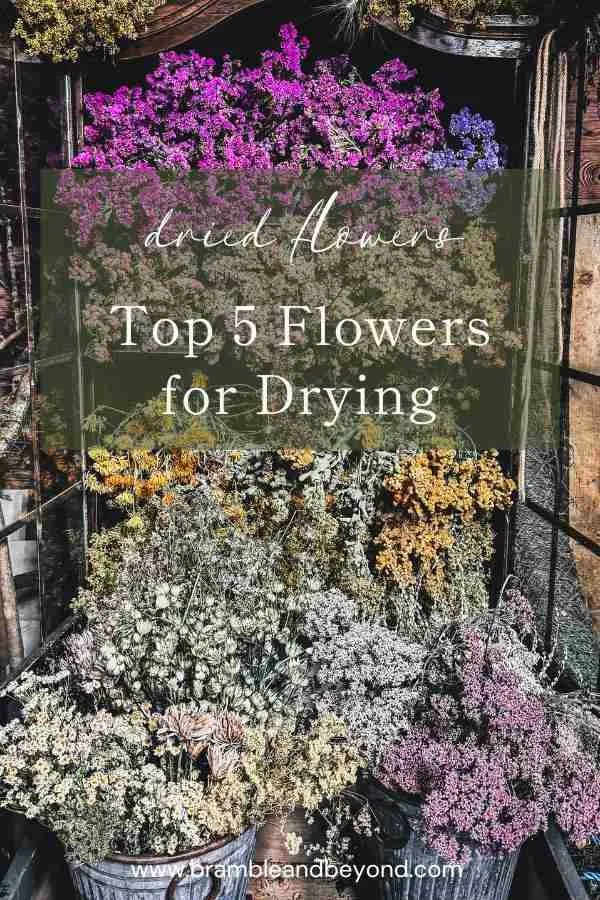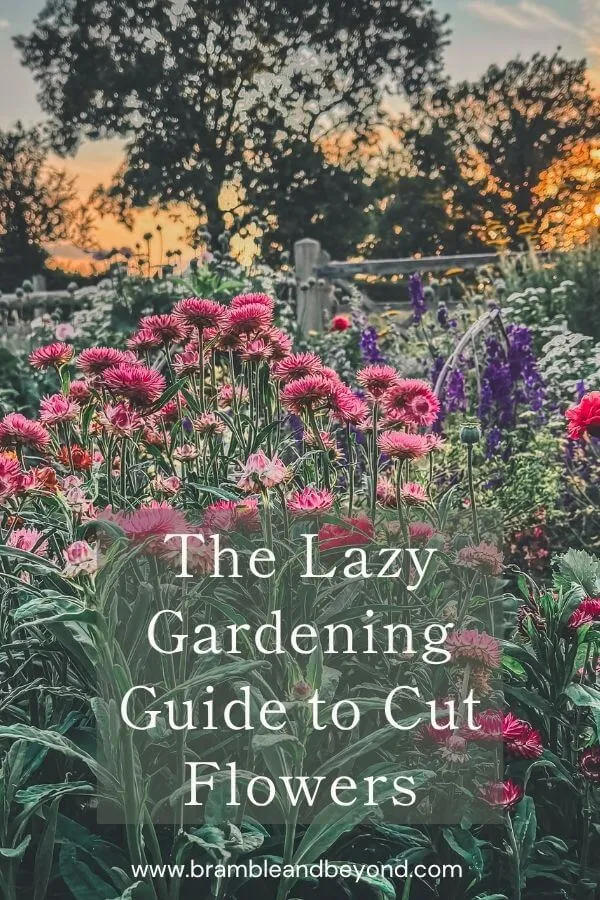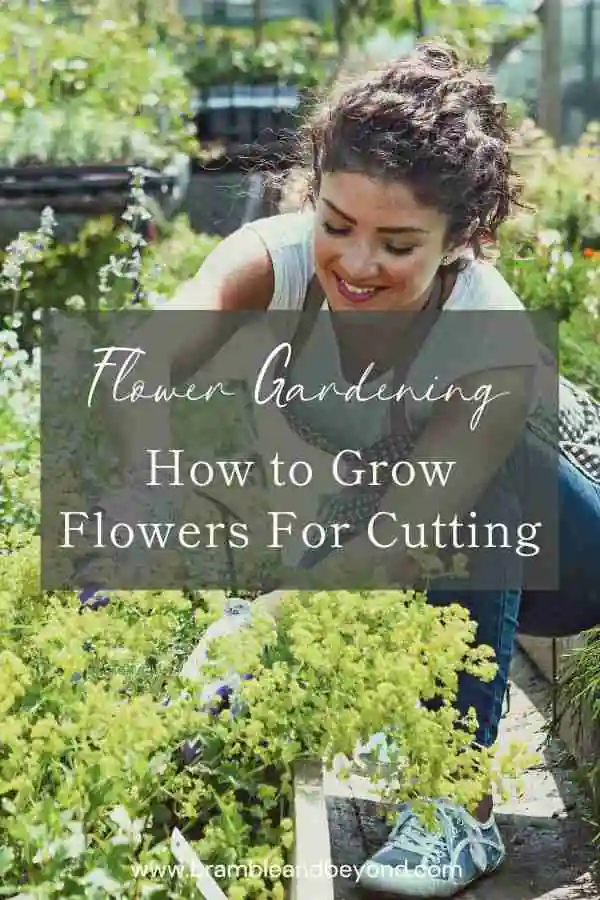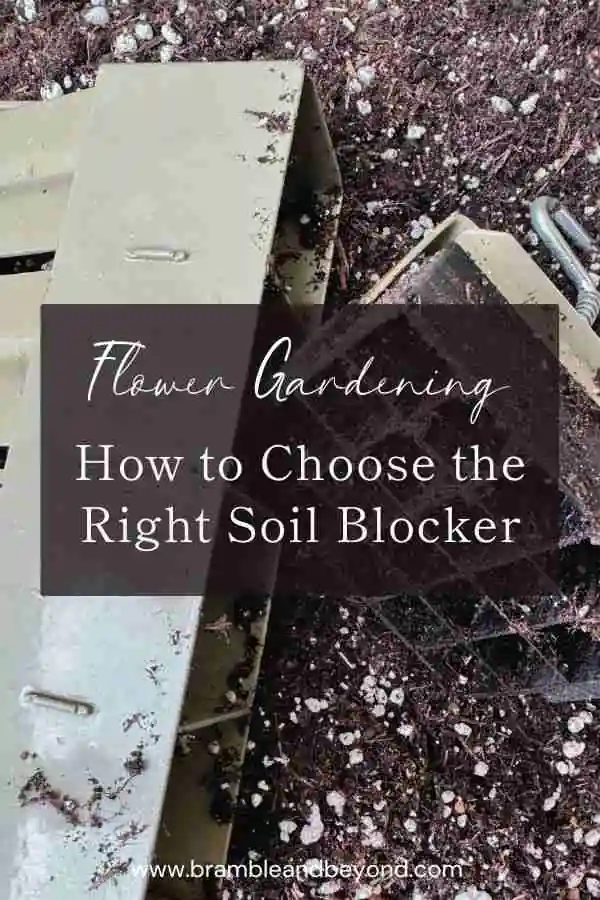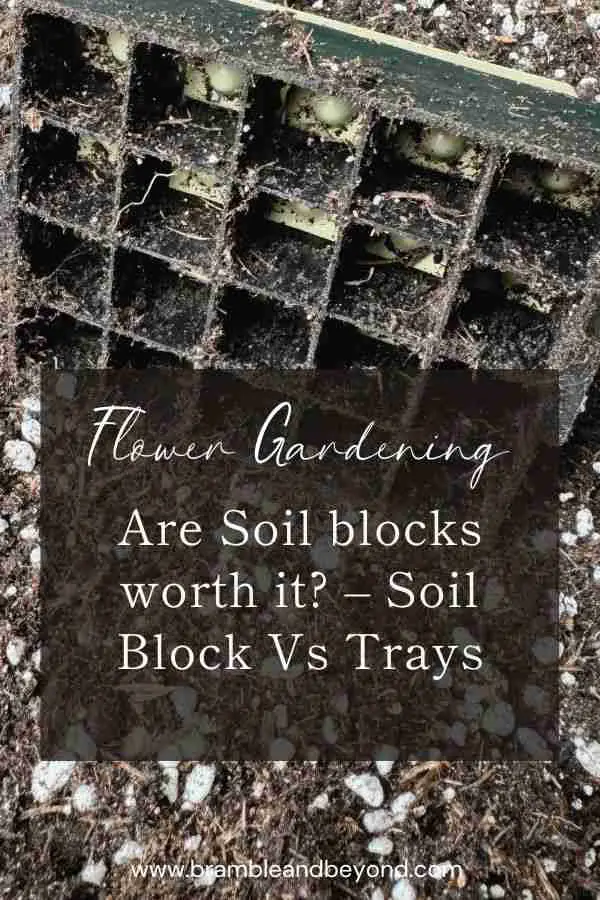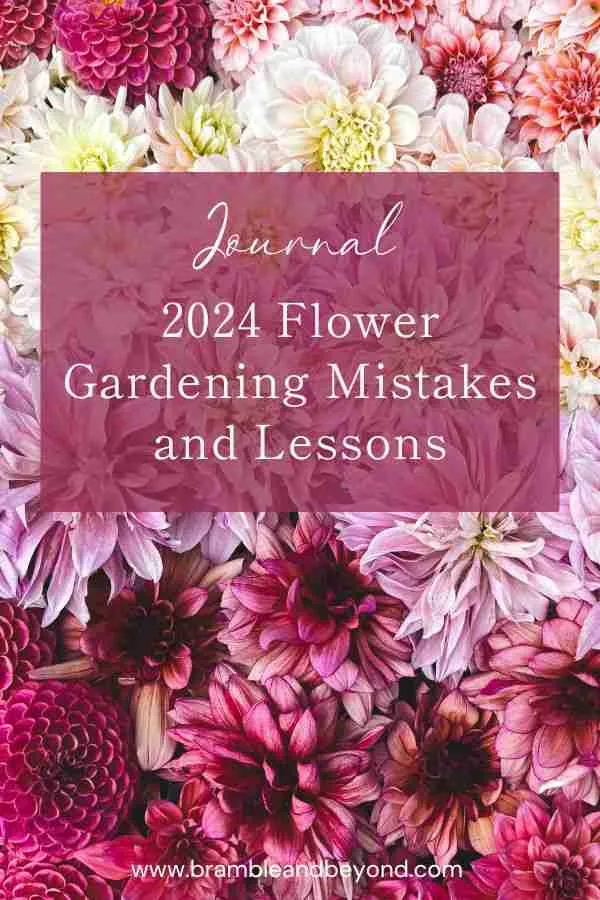Disclosure: This post may contain affiliate links, meaning I get commission if you decide to make a purchase through my links, at no cost to you. Please read my Affiliate Disclosure for more information.
Dried flowers have a timeless appeal, combining beauty, sustainability, and practicality. After being in the doldrums since the 1970s, there has been somewhat of a resurgence in recent years. Whether you’re crafting wreaths, decorating your home, or simply preserving the essence of your garden, growing your own flowers for drying is an incredibly rewarding experience. But where do you start?
In this post, I’ll walk you through five standout flower varieties that are easy to grow and ideal for drying. Along the way, I’ll share my personal tips for sowing, growing, and drying these blooms, so you can create stunning arrangements with ease. Let’s dig in!
Why Grow Flowers for Drying?
Dried flowers are more than just a trend—they’re a sustainable way to enjoy the fruits of your gardening efforts year-round. Here’s why I love growing flowers for drying:
• Eco-Friendly: Dried flowers don’t require water or chemicals to maintain their beauty, making them an environmentally conscious choice.
• Longevity: Unlike fresh blooms, dried flowers last indefinitely with proper care, making them perfect for long-lasting home decor or gifts.
• Creative Potential: And my personal favourite, their unique textures and muted tones add depth and character to arrangements, wreaths, and art projects.
By growing your own flowers, you’re not only saving money but also ensuring you have a steady supply of blooms perfectly suited to your personal style.
The Top 5 Easy-to-Grow Flowers for Drying
Most flowers, will dry, but whether they are easy to dry or dry pretty is another thing (I’m thinking of you Snapdragons). If you are making your first attempt at growing flowers for drying then I would highly recommend the following to start with. I usually have an experiment with something new each year, but these are my staples I wouldn’t do without.
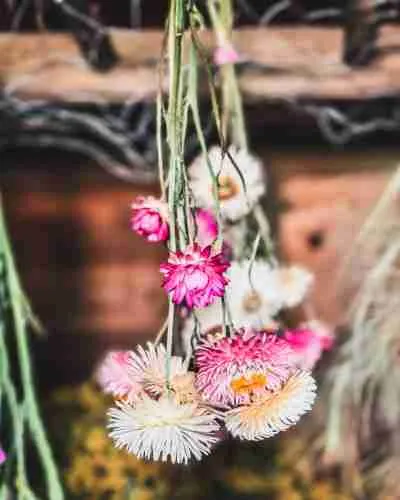
1. Strawflower (Helichrysum)
Pro: Strawflowers are the stars of dried flower world, in my opinion. They’re incredibly productive, quick to dry, and retain their vivid colours, making them perfect for everything from bouquets to wreaths.
Con: Honestly, I haven’t found a downside yet!
Why They’re Perfect for Drying:
Strawflowers are a dream to work with. Their papery petals hold their shape and colour even after drying, adding a vibrant pop to any arrangement.
Growing Tips:
• Sowing: Start seeds indoors 6-8 weeks before your last frost date as they are tender annuals. They like warmth to germinate (something I forgot about last year), so for best results keep them nice and toasty to get them started.
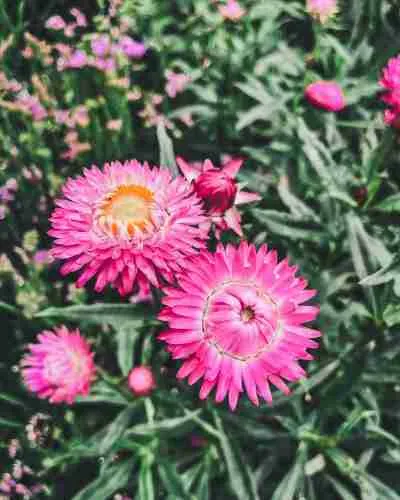
• Conditions: Plant in full sun with well-drained soil.
• Maintenance: Pinch back young plants for bushier growth. Cut the flowers regularly to encourage more blooms. Once cut the flowers will continue to open a bit, so if you want to avoid seeing a blown out centre make sure you cut them before they are fully open. I like them in various stages of openness, so I just tend to cut everything that is a reasonable size once a week.
Drying Tips:
After harvesting when flowers are partially open, hang in small bunches in a warm, dry space. They dry quickly, so you’ll be arranging with them in no time. The first flowers of the season tend to have floppy stems, so if you can spare the time, it is worth wiring the stems to make them easier to work with once dried.
2. Grasses
Pro: Grasses are versatile, productive, and incredibly easy to dry. With so many varieties, they add texture and movement to any dried arrangement. If you want that wild, airy feel to your arrangements, then grasses are a must.
Con: Some varieties are delicate (e.g. squirrel tail) and may shed or fall apart during handling.
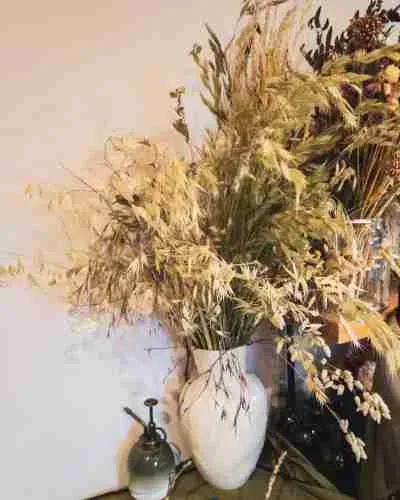
Why They’re Perfect for Drying:
Grasses like bunny tails, Panicum elegans (sprinkles), and pampas, or even some interesting stems you see in the hedgerows, bring a natural airy quality to arrangements. They’re ideal for creating that whimsical, boho vibe.
Growing Tips:
• Sowing: Most grasses can be direct-sown in spring, although I treat them the same as any other and sow them indoors so I can control their numbers and placement. Once sown many happily volunteer themselves throughout the garden – you have been warned!
• Conditions: They thrive in sunny, well-drained locations, but can tolerate a bit of shade.
• Maintenance: Minimal care is needed—just water occasionally and harvest when seed heads mature.
Drying Tips:
Harvest as seed heads start to firm up. To avoid shedding, handle delicate varieties gently and use a fixative spray if needed (I’ve never used this so, can’t vouch for how well it works). I vary drying them by hanging them upside down and standing in vases, so that I get some interesting shapes. Often hanging them upside down produces poker straight stems and in vases over arching stems. I find a mix of both works well in arrangements.
3. Billy Buttons (Craspedia)
Pro: Quirky and bold, Billy Buttons dry quickly and retain their cheerful yellow hue, making them a statement piece in any arrangement.
Con: They’re not very productive and need winter care unless grown as an annual.
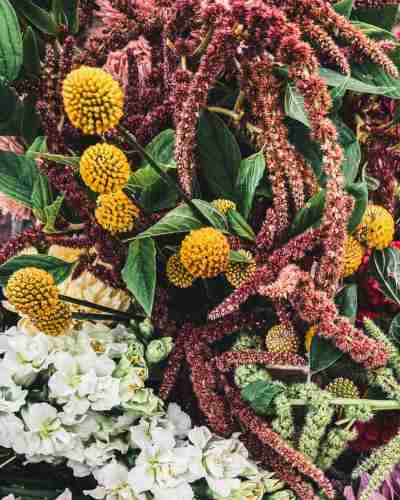
Why They’re Perfect for Drying:
I don’t know what it is about these flowers but I love them. These small spherical yellow blooms bring a playful, modern touch to dried arrangements and their sturdy stems make them easy to work with. There is also no change in the colour and form during the drying process. Even if yellow isn’t really your favourite colour, I’m sure you will love these.
Growing Tips:
• Sowing: Start seeds indoors in early spring. Sow more than you need as I find that you will end up with far fewer plants than you started with.
• Conditions: Billy Buttons prefer full sun and well-drained soil. They don’t grow into big plants so you can cram a lot into a small space.
• Maintenance: Protect these tender perennials from frost or treat them as annuals.
Drying Tips:
Cut stems when flowers are fully yellow. These need to be checked regularly as they can quickly turn to seed when you are not watching. I dry them in small bunches hanging them upside down, although I suspect they will dry just as well if you dry them upright.
4. Dahlias
Pro: Dahlias are highly productive and come in a stunning variety of shapes and colours. As effective perennials, they offer repeat blooms year after year.
Con: They’re slower to dry, and their colours often mute during the process.
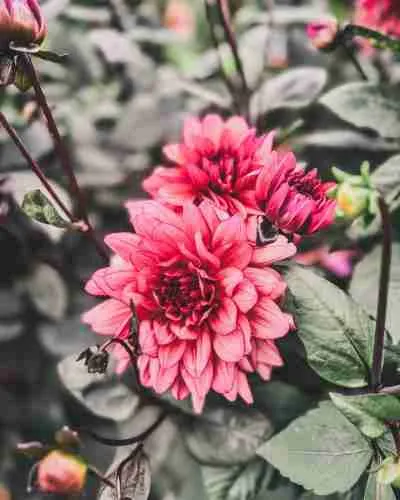
Why They’re Perfect for Drying:
Although a bit trickier to work with, dahlias’ intricate forms add sophistication to dried arrangements. They’re worth the extra effort!
Growing Tips:
• Sowing: Plant tubers in spring after the last frost.
• Conditions: Dahlias thrive in rich, well-drained soil and full sun.
• Maintenance: The general advice is to keep them watered and fertilised, but I have to be honest, other than adding some support, once I plant mine I rarely do anything more with them. I cut all open flowers weekly to encourage more blooms. I guarantee that you will have same number ready for picking the following week.
Drying Tips:
I hang individual dahlias upside down and try to dry them as quickly as possible. If they dry too slowly, then they are prone to mould between the stem and the flower head. Also, I find the slower they dry, the more colour is lost in the drying process. Be prepared for the final colour and form not being anything like the original flower. This is part of the fun!
5. Statice (Limonium)
Pro: Statice is extremely productive, easy to grow, and holds its vivid colours well during drying.
Con: Its stiff structured form can be challenging to use in floaty or airy arrangements. I have discovered a more floaty perennial version, that may be a better option. However, they didn’t flower much in the first year, so I am not yet sure if this is a valid alternative to the regular statice.
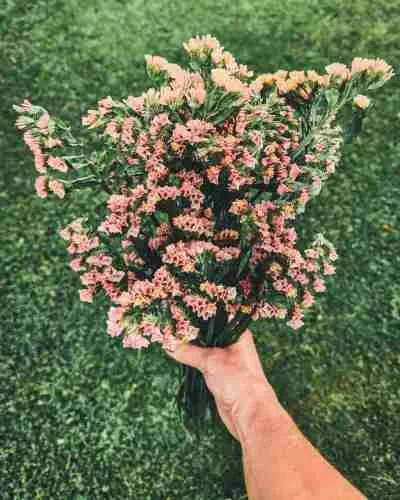
Why They’re Perfect for Drying:
Statice is a workhorse in the dried flower world, offering a sturdy texture and bold hues that last for years.
Growing Tips:
• Sowing: Start seeds indoors, then transplant to a sunny spot.
• Conditions: It thrives in full sun and well-drained soil.
• Maintenance: These need minimal attention, other than a bit of staking. Pinch back young plants for bushier growth.
Drying Tips:
Harvest when the flowers are fully open. Hang small bunches upside down in a dry, airy space.
Additional Flowers to Try for Drying
If you’re feeling adventurous, give these a go:
• Larkspur: Beautiful spikes of flowers, though they’re tricky to germinate and loved by slugs.
• Feverfew: A short-lived perennial that self-seeds easily and adds a delicate, wild touch to arrangements.
• China Aster: Beautiful classic flowers that are quite generous in their flower production. They need to be dried in a similar fashion as dahlias to ensure they dry fully.
• Zinnia: Given the right conditions zinnias dry rather beautifully maintaining the majority of their colour, and becoming wonderfully vintage looking.
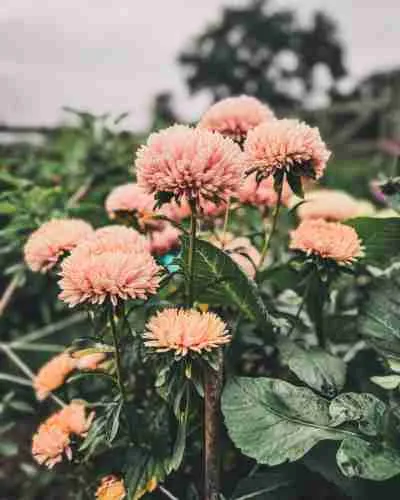
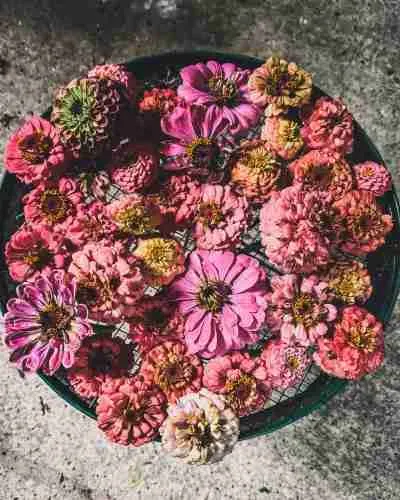
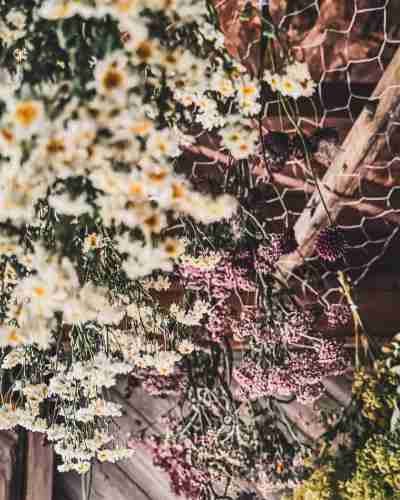
Tips for Sowing, Growing, and Drying Flowers
To maximise the colour and quality of your dried flowers, follow these tips:
• Sowing: Start seeds early indoors to get blooms flowering as early as possible. This means you can take advantage of the long, warm sunny days to assist with the drying process.
• Harvesting: Timing is key—cut flowers when they’re at their peak bloom but before they start to fade.
• Drying: Hang flowers upside down in small bunches (no more than 10 stems) in a warm, dark, and dry space with good airflow. The faster they dry, the better they’ll retain their colour.
Growing flowers for drying is a joyful, rewarding experience that brings the beauty of your garden into your home all year long. Whether you’re drawn to the vibrant hues of strawflowers, the quirky charm of Billy Buttons, or the timeless elegance of grasses, there’s a flower on this list for every gardener. You’ll find a good selection of dried flowers at Chiltern Seeds.
Remember, the secret to stunning dried flowers is simple: grow, harvest, and dry them with care and attention. As you experiment with these blooms, you’ll discover the joy of creating arrangements that reflect your unique style and the beauty of nature.
“A garden is a poem of colour and life, and dried flowers are its echoes, carrying the beauty of a season into forever.”
So why not let your garden speak? Start sowing, drying, and creating your own timeless arrangements today. Not only will you be surrounded by beauty, but you’ll also be crafting memories to last a lifetime.

